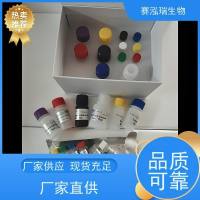Circulating platelets undergo dramatic morphological changes in response to platelet agonists, resulting in attachment, spreading,
secretion, and aggregation. These rapid dynamic physiological activities require a series of rapid biochemical reactions,
including tyrosine phosphorylation of various intracellular proteins and remodeling of the cytoskeleton. Calpain, a Ca2+
-dependent thiol protease, plays an important role in remodeling the platelet cytoskeleton by selective hydrolysis of platelet
proteins in a manner dependent on platelet activation (1
). One of the substrates of calpain was found to be cortactin (2
), a filamentous actin (F-actin) crosslinker (3
), and a prominent substrate of Src protein tyrosine kinase (4
–6
). Cortactin is enriched in platelets and in many motile adherent cells such as metastatic breast tumor cells (7
,8
). Tyrosine phosphorylation of cortactin is also implicated in endothelial cell migration (9
). Because cortactin is highly tyrosine-phosphorylated during platelet activation, study of cortactin proteolysis may reveal
the mechanism by which tyrosine phosphorylation and calpain-mediated hydrolysis regulate the reorganization of the platelet
cytoskeleton.






